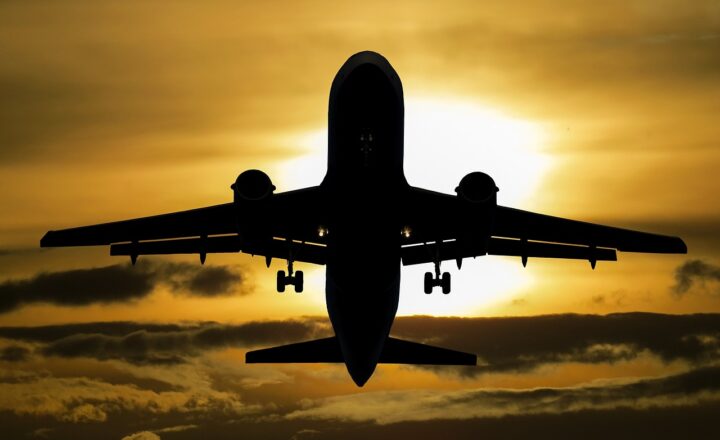Turbulence Ahead: A Deep Dive into the Most Notable Aircraft Failures
November 18, 2024

Air travel, while one of the safest modes of transportation, has seen its share of notorious aircraft failures throughout history. From engineering faults to human errors, these incidents have not only led to tragic loss of life but have also significantly impacted aviation regulations and aircraft design in the years that followed.
In this comprehensive article, we’ll take a detailed look at some of the most notable aircraft failures, analyzing their causes, impacts, and the lessons that the aviation industry has learned.
1. Understanding Aircraft Failures
Before delving into specific incidents, it’s important to understand what constitutes an aircraft failure. Aircraft failures can be categorized into three broader categories:
- Mechanical Failures: These include issues with the aircraft’s structure, engines, avionics, or control systems due to design flaws or maintenance neglect.
- Human Error: Situations where pilot inexperience, miscommunication, or fatigue contribute to a failure to handle the aircraft effectively under certain conditions.
- Environmental Factors: Severe weather conditions, bird strikes, or other external influences that compromise the safety of the aircraft during flight can also lead to failures.
This categorization provides a framework for analyzing the following notable aircraft failures that have occurred over the years.
2. The Lockheed L-188 Electra: A Case of Vortex Ring State
The Lockheed L-188 Electra was a turboprop airliner that saw several tragic incidents in the 1960s, including a well-known accident involving Eastern Air Lines Flight 855, which crashed shortly after takeoff due to a phenomenon known as the vortex ring state.
Incident Overview:
On April 9, 1972, the flight operated by Eastern Air Lines experienced a dramatic aerodynamic failure shortly after takeoff from Miami International Airport. While climbing, the aircraft encountered a severe wind shear, which led to its rapid descent.
Analysis:
The ensuing investigation revealed that the pilots had failed to adequately react to the wind shear condition, leading to a loss of control. The incident highlighted the need for better pilot training concerning wind shear and the importance of understanding how certain aircraft structures could react in such scenarios.
Impact on Aviation:
This incident brought significant changes to pilot training, especially regarding wind shear recovery techniques. It also fed into the reconsideration and enhancement of aircraft design, pushing for more research into avionics that could predict such turbulence in the future.
3. The Boeing 737 MAX: A Lesson in Automation and Safety
The Boeing 737 MAX crises, wherein two crashes claimed the lives of 346 individuals, brought the issue of aircraft automation and pilot reliance to the forefront of aviation discussions.
Incident Overview:
The crashes of Lion Air Flight 610 in October 2018 and Ethiopian Airlines Flight 302 in March 2019 were primarily attributed to flaws in Boeing’s MCAS system, which was designed to prevent stalls but in these cases misused sensors to push the nose of the aircraft down uncontrollably.
Analysis:
Investigations revealed a combination of technical malfunctions, inadequate pilot training on new systems, and management decisions that prioritized speed over safety. The design of the MCAS system came under scrutiny, leading to questions about the robustness of certification processes for new technologies.
Impact on Aviation:
The global grounding of the 737 MAX prompted intense scrutiny of Boeing’s safety culture and regulatory oversight. The incident initiated a reevaluation of pilot training related to automated systems, teaser discussions on how the industry’s regulatory frameworks may need to adapt in response to rapid advances in technology.
4. The Concorde: Speed Doesn’t Equal Safety
The Concorde, renowned for its supersonic capabilities, suffered a tragedy in 2000 that forever altered the perception of the aircraft and its safety record.
Incident Overview:
On July 25, 2000, Air France Flight 4590 crashed shortly after takeoff from Charles de Gaulle Airport, resulting in the deaths of all 109 onboard and four people on the ground. The accident was triggered when a piece of metal debris punctured one of the tires, which then shredded and collapsed the fuel tank.
Analysis:
The subsequent investigation revealed multiple contributing factors, including maintenance issues while servicing the runway. Thus, the analysis spotlighted the need for stricter runway inspection protocols post-accidents.
Impact on Aviation:
As a result of this incident, Concorde Aircraft was grounded for a period of time, leading airlines to reconsider supersonic travel’s sustainability and safety. Additionally, the findings resulted in an overhaul of safety regulations pertaining to fuel tank design and the materials used in tires.
5. The Importance of Incident Analysis in Aviation Safety
The incidents highlighted in this article serve as reminders that aviation remains a complex interplay of technology, human skill, and environmental factors. Each failure has played a crucial role in shaping modern aviation’s safety practices and protocols.
A thorough analysis of aviation failures has led to advancements such as:
- Enhanced Pilot Training: A push for more comprehensive training programs has emerged, particularly regarding automation and emergency management.
- Stricter Regulations: The aviation industry has realized the importance of diligent oversight and improved regulations that ensure the reliability of aircraft systems.
- Technological Advancements: Ongoing research into predictive systems and technologies that can provide real-time data to pilots while navigating through adverse conditions has improved.
Ultimately, aviation safety is a collective effort that requires the collaboration of various stakeholders, including manufacturers, regulators, and airlines. By embracing both failures and successes, the industry continues to strive towards a safer air travel experience.
Conclusion
Aircraft failures, although tragic, have been integral in reinforcing the aviation industry’s commitment to safety. Through the investigation of past incidents, key lessons have been adopted into modern practices and technologies. As we celebrate the advancements in air travel today, it is essential to remember the turbulence that has brought us to this moment and ensure that it forms the basis for future improvements in aviation safety protocols.







